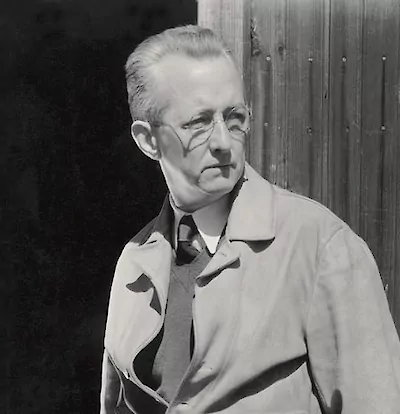Charles Sheeler
High Priest of Industry




For Charles Sheeler, the vast factories of industrial America were modern cathedrals, “our substitute for religious experience.” That’s an incredibly bleak concept, but Sheeler’s hard-edged paintings weren't a criticism of industrialized capitalism, they glorified it. Sheeler was the poster boy for Precisionism, the first purely American modern art movement. The movement took inspiration from Cezanne’s simplification of forms, Cubism’s dramatic angles and Futurism’s obsession with industry, synthesized into a wholly new aesthetic and mission: a minimalist-realism that lauded the solemn beauty of human-built spaces.
Sheeler was classically trained in painting at the Pennsylvania Academy of Fine Arts, under the American Impressionist William Merritt Chase. Trips to Italy and France exposed the young artist to an unusual blend of influences that trace through to his mature work in with striking clarity. From the medieval traditions of Giotto and Piero della Francesca, Sheeler took interest in the depiction of architecture in painting, smooth brushwork, and the somber formality of one-point perspective. From the cubist artworks by Picasso and Braque that he saw in Paris, Sheeler lifted flat color and a penchant for dramatic angles. But the biggest influence on Sheeler’s art, and by extension the burgeoning precisionist movement, was his work as a commercial photographer. In the early 1900s (as today) it was tough to make a living as a full-time fine artist, so Sheeler bought himself a five dollar brownie camera and taught himself photography. He focused on architecture, documenting buildings in Philadelphia for local architects, building a reputation for evocative, dignified compositions.
Sheeler kept busy, showing paintings at the famous 1913 armory show, exhibiting photographs alongside Paul Strand and Morton Schamberg in New York’s Modern Gallery in 1917, and collaborating with the filmmaker Paul Strand on the experimental art film “Manhatta” in 1920, and joining Condé Nast as a staff photographer in 1923.
Sheeler’s influence on American art was solidified in 1927, when a New York ad firm commissioned him to photograph the newly finished Ford Motor Company factory at River Rouge outside of Detroit Michigan. It was the largest factory in the world, covering 2000 acres and ready to employ 75,000 people in the end-to-end production of the brand new Ford Model A. For Sheeler, it was Mecca. A holy pilgrimage into the heart of American Industry. His photos were well received, and published widely as a part of Ford’s media blitz, but they were just the beginning. With the commission closed, Sheeler began to paint the factory on is own time, shaping, reducing, distilling the implacable warehouses, smokestacks and docks of the factory into an empty, geometric eden. A paradise of industry, the new landscape of progress.
The combination of crisp, minimal realism and nearly idolatrous reverence for the built environment became the hallmarks of the Precisionist movement, where Sheeler was joined by Joseph Stella, Stuart Davis, George Ault, Charles Demuth, and Georgia O'Keeffe. Sheeler joined the Metropolitan Museum of Art as a photography fellow in 1942, and his paintings and photos continued to bend and blur the lines between the two mediums until 1959, when he stopped making art after suffering from a stroke. Charles Sheeler died in 1965 after a second stroke.
...
Got questions, comments or corrections about Charles Sheeler? Join the conversation in our Discord, and if you enjoy content like this, consider becoming a member for exclusive essays, downloadables, and discounts in the Obelisk Store.